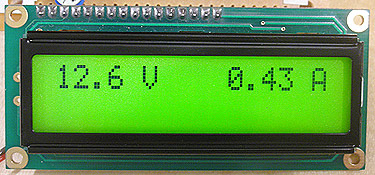I have bought a cheap but neat Uni-T UT61E multimeter, which only has one display as most multimeters. For 40 Euro's I cant complain. It's on the way to me.
Q.1 If I would like to measure both Voltage and Current, do I have to buy another multimeter? Are there mutlimeters that measure both Voltage and Current in two displays with multiple wires attached to the meter? Have searched but haven't found any hand-multimeter.
Q.2 I would like to put a very tiny voltage/current multimeter lcd on my batery pack so that I can check the volage there (without using my big multimeters) on travels. Any advice on how/where I can find such things?
So far I only found this which is a self-build kit:
Do you have better advice and/or know any existing final products that are calibrated and working okay?

http://www.electronics-diy.com/store.php?sel=kits&sub=pic_voltmeters
My new big mutlimeter on its way, with which I guesse I cant view voltage and current simultaneously:

